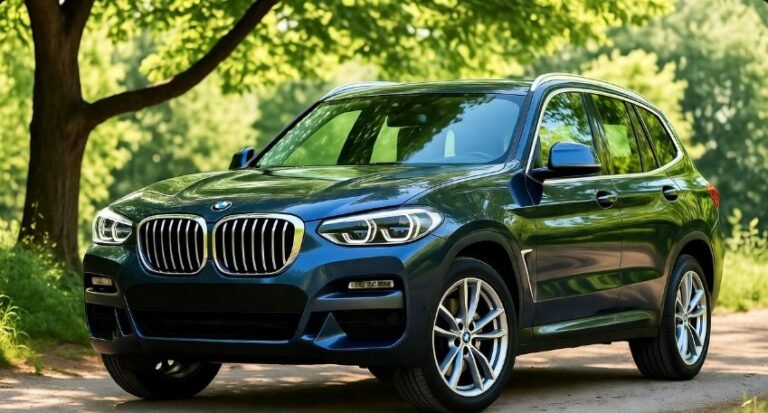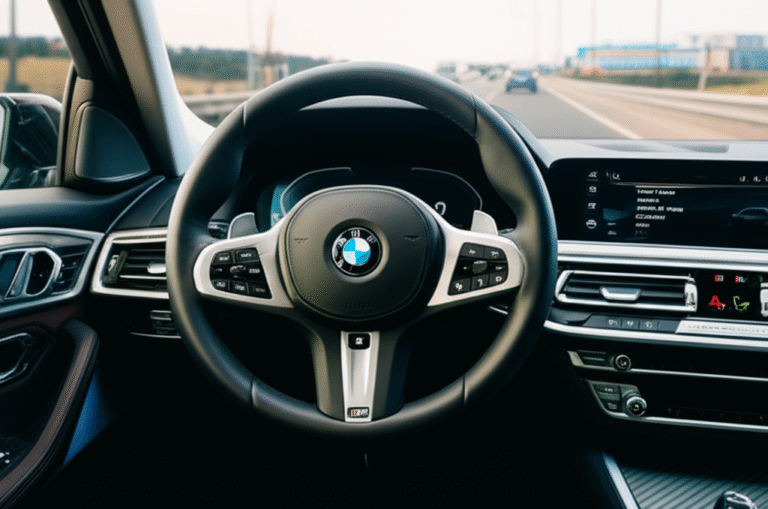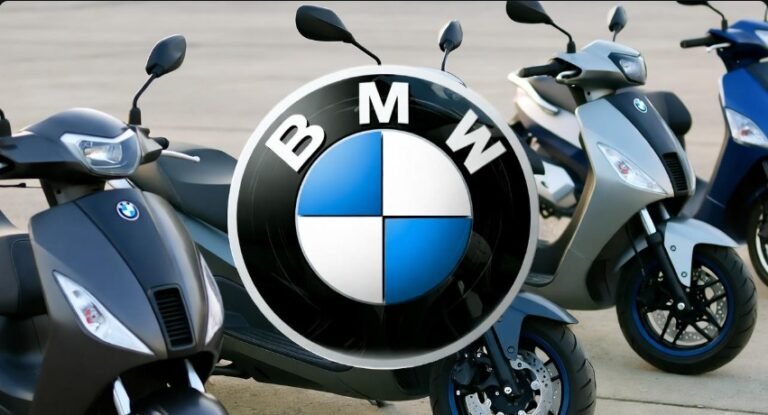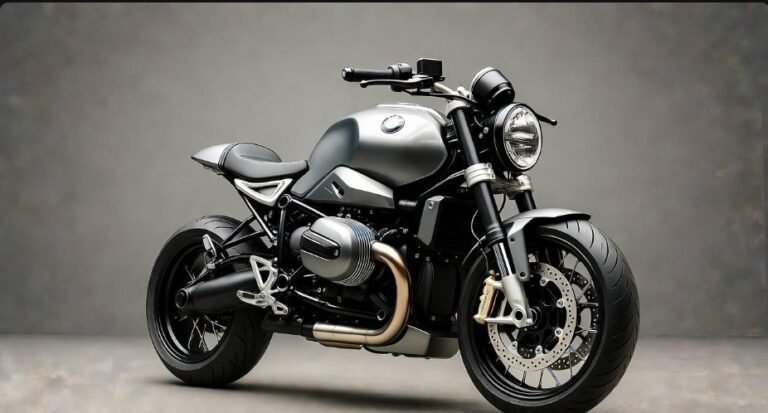BMW Ki Sabse Mahangi Gadi: 6 Facts
The most expensive BMW car today is often a limited-edition masterpiece like the BMW XM Label Red, pushing the boundaries of luxury and performance with a price tag that reflects its exclusivity and cutting-edge technology. Discover 6 key facts about these ultra-luxury BMW vehicles.
Key Takeaways
- Explore the pinnacle of BMW’s most expensive models.
- Understand the factors driving extraordinary BMW prices.
- Discover unique features of BMW’s ultra-luxury segment.
- Learn about the performance and craftsmanship involved.
- Gain insights into the exclusivity of these vehicles.
- Appreciate BMW’s commitment to automotive innovation.
If you’re captivated by the world of luxury automobiles, you’ve likely wondered about the crème de la crème of any iconic brand. For BMW enthusiasts, this often leads to a fascinating question: “What is BMW’s most expensive car?” It’s a question that speaks to the brand’s heritage of engineering excellence and its relentless pursuit of automotive perfection. Navigating the options can feel complex, with various models and special editions vying for the top spot. But don’t worry, we’ve compiled the essential facts to demystify the world of BMW’s most luxurious offerings. Get ready to explore the opulent interiors, groundbreaking technology, and astonishing performance that define the most expensive BMW cars available today.
Understanding BMW’s Ultra-Luxury Market
BMW, a brand synonymous with driving pleasure and sophisticated engineering, operates across a wide spectrum of the automotive market. From accessible sedans to the thrilling M performance series, there’s a BMW for many drivers. However, at the very apex of their lineup sits a collection of vehicles that represent the absolute pinnacle of automotive luxury, performance, and exclusivity. These aren’t just cars; they are rolling works of art, packed with the latest innovations and crafted with meticulous attention to detail. The “most expensive BMW car” isn’t a static title but often shifts with new releases, limited editions, and bespoke customization options. These elite vehicles cater to a discerning clientele who seek unparalleled driving experiences, cutting-edge technology, and the prestige that comes with owning something truly exceptional.
The factors that contribute to the high price of these top-tier BMWs are multifaceted. They include the use of exotic materials, V12 or advanced hybrid powertrains, extensive hand-finishing, cutting-edge technology integration, and, crucially, their limited production numbers. Owning one of these vehicles is not just about transportation; it’s about belonging to an exclusive club of automotive connoisseurs who appreciate the finest engineering and design. As we delve into the specifics, you’ll see how BMW consistently pushes the boundaries to create vehicles that command attention and admiration on every road.
Fact 1: The BMW XM Label Red – Redefining Super-SUV Performance
Currently, one of the most prominent contenders for the title of BMW’s most expensive car is the stunning BMW XM Label Red. This isn’t just another SUV; it’s a high-performance plug-in hybrid electric vehicle (PHEV) designed from the ground up as a standalone M model, a rarity for BMW. The “Label Red” designation signifies an even more exclusive and potent version of the already formidable BMW XM. It represents BMW’s boldest statement yet in the luxury performance SUV segment, blending raw power with opulent comfort.
Underneath its aggressive and captivating exterior lies a powerhouse. The XM Label Red boasts a twin-turbocharged 4.4-liter V8 engine paired with a sophisticated electric motor. This hybrid powertrain delivers an astonishing combined output of up to 750 horsepower and a colossal 737 lb-ft of torque. This level of power in an SUV is simply breathtaking, allowing for exhilarating acceleration and a driving experience that rivals many sports cars. The transmission is an M Steptronic Sport automatic, ensuring seamless shifts and maximizing performance. The electric range is also a significant feature, offering around 30 miles of pure electric driving, making it a versatile option for both performance and everyday efficiency.
The interior of the XM Label Red is a sanctuary of luxury. Expect premium materials like Merino leather, carbon fiber accents, and exquisite craftsmanship throughout. The design is driver-focused, with the latest BMW iDrive infotainment system and a wealth of digital displays. The seating is designed for both comfort and support, whether you’re navigating city streets or tackling winding roads. The exterior design is equally striking, featuring a distinctive grille, sharp lines, and a commanding presence that announces its arrival. The Label Red variant often includes exclusive color schemes and badging, further setting it apart.
To put its price into perspective, the BMW XM Label Red typically retails in the United States for well over $180,000, with customization options easily pushing that figure higher. This price point places it firmly at the top of BMW’s current production vehicle offerings and solidifies its position as one of the most expensive BMW cars you can buy new today.
Fact 2: Limited Editions and Bespoke Creations – The Pinnacle of Exclusivity
Beyond the regular production models, BMW has a long history of producing extremely limited edition vehicles and offering extensive bespoke customization through its BMW Individual program. These special models are often created to celebrate anniversaries, commemorate racing heritage, or push the boundaries of automotive design and technology. Because of their rarity and unique specifications, they command the highest prices.
One notable example from the past that exemplifies this exclusivity is the BMW M4 DTM Champion Edition. Released to celebrate Marco Wittmann’s DTM championship wins, this car was a stripped-down, track-focused M4 with a significant power boost and aggressive aerodynamic enhancements. Only a handful were ever produced, making them incredibly rare and sought after by collectors. While not as recent, it illustrates the principle: extreme rarity drives value.
The BMW Individual program allows the most discerning customers to personalize their vehicles to an extraordinary degree. This can involve unique paint finishes, rare interior leathers, custom badging, or even specially engineered features. When customers opt for extensive BMW Individual customization on a top-tier model like an M8 Gran Coupé or a 7 Series, the final price can easily surpass that of a standard luxury vehicle, sometimes reaching into the $300,000 to $400,000 range or even higher for truly unique commissions.
These ultra-exclusive models and bespoke builds are often not about pure practicality but about owning a piece of automotive art and engineering. Their value often appreciates over time, making them attractive to collectors and investors as well as enthusiasts. The ultimate “most expensive BMW” might not always be a model you can find on a dealer lot but rather a special order or a rare classic that commands astronomical prices at auction, but in terms of new cars today, the XM Label Red and heavily customized Individual models are strong contenders.
Fact 3: The Legacy of the V12 Engine in BMW’s Most Expensive Cars
For decades, the V12 engine was the undisputed hallmark of automotive luxury and unparalleled smoothness, and BMW reserved this magnificent powerplant for its most exclusive and expensive models. While the automotive world is rapidly electrifying, the legacy of BMW’s V12 cars remains a significant part of their most expensive history.
Historically, models like the BMW 7 Series (in its highest trims, often designated with a ‘6’ in their model number, like the 760Li) and the exquisite BMW 8 Series Coupé utilized the legendary V12 engine. These engines, typically 6.0-liter twin-turbocharged units, produced immense power with effortless refinement. They offered a driving experience characterized by deep reserves of torque, incredibly smooth acceleration, and a quiet cabin that felt insulated from the outside world. This made them the ultimate grand tourers and luxury sedans.
The M760i xDrive, for instance, was a prime example of a V12-powered BMW that sat at the very top of the 7 Series lineup. Its V12 engine provided supercar-like performance with the discreet elegance of a flagship sedan. These vehicles were not just about raw speed but about the ultimate expression of BMW’s engineering prowess and commitment to luxury. The price tags for these V12-equipped models often started well into six figures, easily exceeding $150,000 and climbing with optional features.
Although BMW has officially discontinued its V12 engines for new passenger cars in most markets, the vehicles that featured them remain some of the most expensive and coveted BMWs ever produced. Their value in the pre-owned market remains strong, particularly for well-maintained examples, reflecting their status as the pinnacle of BMW’s internal combustion engine era. If you encounter a V12 BMW today, whether new (from residual stock) or pre-owned, you are looking at a vehicle that represents a significant investment in automotive history and luxury.
Fact 4: High-Performance M Cars – The Apex of Driving Dynamics
BMW M GmbH is the high-performance subsidiary of BMW, responsible for creating some of the most exhilarating and capable vehicles on the road. While not all M cars are the most expensive, the top-tier M models, especially those with limited production or special editions, often vie for that title due to their advanced engineering, powerful engines, and track-honed dynamics.
The BMW M8 Competition Coupé, Gran Coupé, and Convertible represent the pinnacle of M performance in the luxury segment. These cars are powered by a potent 4.4-liter M TwinPower Turbo V8 engine, delivering up to 617 horsepower and 553 lb-ft of torque. Mated to an M Steptronic transmission and M xDrive all-wheel-drive system, they offer blistering acceleration, capable of going from 0 to 60 mph in under three seconds. The chassis, suspension, and braking systems are all meticulously engineered for optimal performance, providing incredible agility and control.
Beyond the standard M8 Competition, BMW occasionally releases special versions like the M8 First Edition or heritage-inspired models that come with even higher price tags due to their enhanced features, unique aesthetics, and limited availability. These vehicles are crafted for drivers who demand the ultimate in performance without compromising on luxury and comfort.
The price point for these flagship M cars typically starts around $130,000 and can easily climb to $150,000 or more, especially when equipped with the extensive options and packages that BMW M offers. These are not just fast cars; they are sophisticated machines that embody BMW’s racing DNA in a luxurious package, making them some of the most expensive and desirable models in the brand’s current portfolio.
| Model | Engine Type | Approximate Starting MSRP (USD) | Key Features |
|---|---|---|---|
| BMW XM Label Red | Plug-in Hybrid V8 | $185,000+ | 750 HP, luxurious SUV, exclusive styling |
| BMW M8 Competition Gran Coupé | 4.4L Twin-Turbo V8 | $135,000+ | 617 HP, 4-door luxury sport, M-tuned dynamics |
| BMW M5 CS (Limited Edition) | 4.4L Twin-Turbo V8 | $100,000+ (Original MSRP – higher on resale) | 627 HP, track-focused, lightweight, exclusive |
| BMW 7 Series (e.g., 760i) | Twin-Turbo V8 (or previous V12) | $110,000+ | Flagship luxury sedan, advanced tech, supreme comfort |
Note: Prices are approximate MSRPs at the time of release and can vary significantly based on configuration, options, dealer markups, and market conditions. Limited edition models often command higher prices, especially on the resale market.
Fact 5: Advanced Technology and Materials – The Cost of Innovation
The most expensive BMW cars are not just about powerful engines and luxurious interiors; they are also showcases for the brand’s most cutting-edge technology and the use of premium, often exotic, materials. The integration of these elements significantly contributes to their elevated price point.
Take, for example, the driver assistance systems found in the latest BMW flagship models. These can include highly advanced features like semi-autonomous driving capabilities, sophisticated parking assistants, augmented reality navigation displays, and biometrics for vehicle access and personalization. The development and integration of AI and advanced sensor suites for these systems are incredibly costly. You can learn more about BMW’s approach to innovation and technology on their official BMW Group website.
In terms of materials, BMW spares no expense. You’ll find extensive use of carbon fiber for structural components and styling elements, helping to reduce weight while increasing rigidity. Interior appointments can include hand-stitched full Merino leather, Alcantara headliners, polished metal inlays, and specially treated woods. Some limited editions might even feature unique materials like forged carbon or advanced composites not typically found in mass-produced vehicles.
The infotainment systems, like the latest iDrive 8 or iDrive 8.5, represent a massive investment in software development, user interface design, and the integration of high-resolution displays and premium audio systems. The goal is to create an intuitive, immersive, and seamless experience for the driver and passengers. The combination of these technological marvels and the finest materials is a key differentiator for BMW’s most expensive offerings, reflecting the cost of engineering and crafting something truly exceptional.
Fact 6: Exclusivity and Rarity – The Value of Scarcity
One of the most significant drivers of price in the luxury automotive market is exclusivity and rarity. BMW understands that for its most discerning customers, owning something truly unique is as important as the performance or features it offers. This is why many of the most expensive BMWs are produced in very limited numbers or are part of special, collectible series.
Consider models like the BMW 3.0 CSL. This legendary car has seen periodic revivals, with the most recent iteration being a track-focused, aerodynamically extreme machine limited to just 50 units worldwide. Each one is meticulously hand-built, a process that is inherently time-consuming and expensive. The scarcity of such models inherently drives up their price, often starting in the high six figures and becoming incredibly valuable on the collector’s market.
Similarly, special editions of existing models, like the M5 CS (which was a limited production run) or unique configurations from BMW Individual, significantly reduce the number of available vehicles. When demand outstrips supply for such exclusive items, prices naturally rise. Owning one of these vehicles offers a sense of prestige and distinction that mass-produced cars cannot match.
The concept of scarcity also extends to certain engine technologies. As mentioned, the V12 engine is no longer in production for new BMW cars. This means that existing V12 models, while possibly not the absolute most expensive new cars in BMW’s current lineup, represent the end of an era and hold a special place in the brand’s history, often commanding premium prices in the pre-owned market due to their rarity and the unique driving experience they offer.
Pro Tips:
When considering BMW’s most expensive cars, remember that the “price” can extend beyond the initial purchase. Factor in specialized maintenance, insurance premiums, and the potential for depreciation or appreciation based on the vehicle’s rarity and condition.
Frequently Asked Questions (FAQ)
Q1: What is the current most expensive BMW car you can buy new?
As of now, the BMW XM Label Red is widely considered one of the most expensive, if not the most expensive, new BMW you can purchase, with a starting MSRP well over $185,000, and often significantly higher with bespoke options.
Q2: Are BMW M cars always the most expensive BMWs?
Not always. While top-tier M cars like the M8 Competition are very expensive, limited-edition models or specially commissioned BMW Individual vehicles can sometimes surpass their prices due to extreme exclusivity or unique configurations.
Q3: What kind of technology can I expect in a top-tier BMW?
You can expect the latest in advanced driver-assistance systems, sophisticated infotainment with large, high-resolution displays, augmented reality navigation, premium audio systems, and potentially semi-autonomous driving features. BMW is a leader in automotive tech integration.
Q4: How much does a V12 BMW cost?
BMW has largely phased out V12 engines for new cars. Previously, models like the M760i xDrive had MSRPs starting well over $150,000. On the pre-owned market, their value varies greatly based on condition and mileage, but they remain highly sought after.
Q5: What makes a BMW car very expensive compared to others?
Several factors contribute: advanced powertrains (like potent V8s or hybrid systems), use of premium and exotic materials (carbon fiber, fine leathers), cutting-edge technology, extensive hand-finishing, limited production runs, and the overall brand prestige and performance engineering associated with BMW.
Q6: Is the BMW XM a good investment?
The long-term investment potential of the BMW XM, especially the Label Red variant, is still unfolding. However, its limited production, advanced hybrid technology, and M performance pedigree suggest it could hold its value well compared to standard luxury SUVs, particularly if well-maintained.
Conclusion
Exploring the realm of BMW’s most expensive cars reveals a fascinating intersection of unparalleled luxury, breathtaking performance, and cutting-edge innovation. From the formidable presence of the BMW XM Label Red to the legacy of V12 power and the track-honed dynamics of M cars, each vehicle represents the pinnacle of what BMW has to offer. These aren’t just automobiles; they are statements of engineering excellence and exclusive craftsmanship. Whether driven by the pursuit of speed, the desire for ultimate comfort, or the appreciation of automotive art, the most expensive BMWs stand as testaments to the brand’s enduring commitment to automotive perfection. Understanding the factors that contribute to their high price – from advanced materials and technology to limited production – offers a deeper appreciation for these extraordinary machines.





